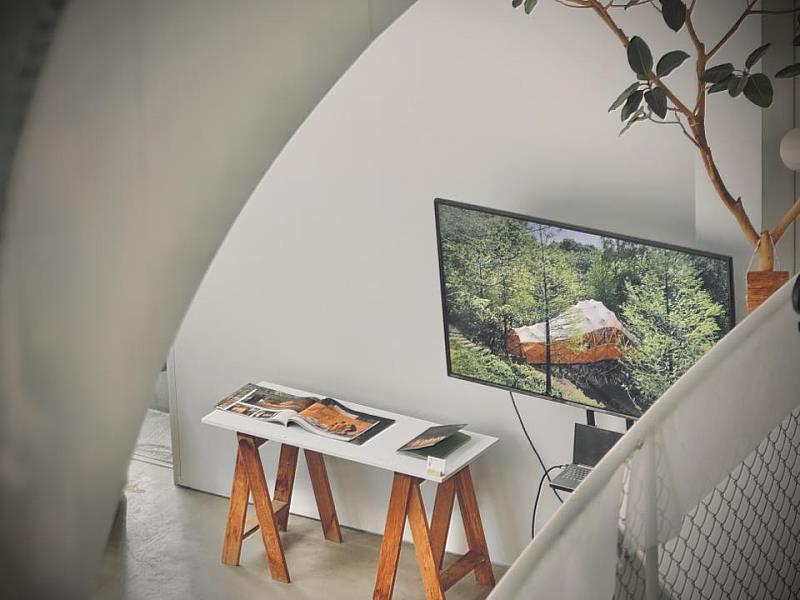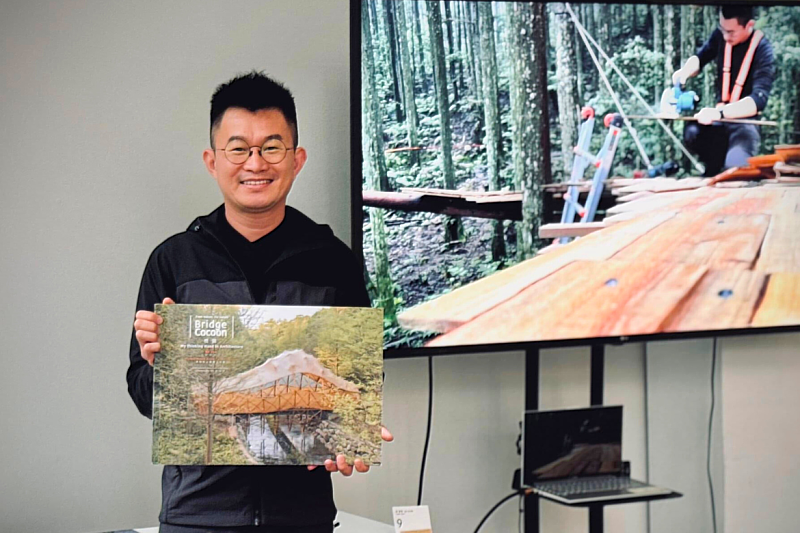- NYCU ECE and IEEE Taipei Section Host 2025 AI Computing Workshop to Explore the Future of High-Performance AI Systems
- NYCU Achieves Global Leadership in Industry Collaboration in THE World University Rankings 2026
- NYCU Asfaloth-2025 Rocket Launched: First Integration of TASA’s MLP Marks a Milestone in Academic Space Research
- NYCU and UC San Diego Renew Ties to Advance Interdisciplinary Research
- NYCU Neuroscientists Illuminate the Brain’s Hidden “Star Map” of Neural Activity
NYCU GIA Professors Present Taiwan’s Innovative and Sustainable Spirit in Japan
(中央社訊息服務20251107 11:41:26)For the first time, the ADA Emerging Architect Award (ADA新銳建築獎) stepped beyond Taiwan’s borders, showcasing the creative energy of Taiwan’s new-generation architects in Tokyo. Among the ten teams featured in the exhibition “A Joint Future: TAIWAN ADA Awards in JAPAN”, held at Shibaura House — an iconic transparent building designed by Pritzker laureate Kazuyo Sejima — two distinguished works were created by Adjunct Assistant Professor NK Kuo and Associate Professor Ling-Li Tseng of the Graduate Institute of Architecture (GIA), National Yang Ming Chiao Tung University (NYCU).

Both featured projects — Kuo’s award-winning “Bridge Cocoon” and Tseng’s “Rolling Pavilion” — originated on NYCU’s Guangfu campus. Using bamboo as their primary medium, the two architects explore how design can respond to the environment while inspiring public interaction.
“Bridge Cocoon,” which earned the top ADA Award in 2024, draws inspiration from the natural form of a silkworm’s cocoon. Constructed from steam-bent bamboo, it gently arches over a small lakeside bridge on campus, providing a shaded resting place where visitors can feel the rhythm of nature.
The structure avoids the use of nails and screws, relying entirely on tension and binding, which allows the bamboo to remain recyclable and environmentally friendly. Its translucent double-layered skin—made from repurposed fishing floats and natural fabric—creates an ever-changing play of light and shadow that reflects the surrounding water.

Kuo describes the work as “a living structure that grows out of its environment,” merging digital precision and handcrafted craftsmanship to express how architecture can once again embrace natural materials and sustainable cycles.
Next to the university’s open courtyard, Tseng’s “Rolling Pavilion” reimagines a gathering space through digital design and innovative bamboo-slicing techniques. The pavilion forms a spiraling, semi-enclosed space that invites people to sit, rest, and converse under a soft, luminous canopy.
By integrating nonlinear arches, truss systems, and LED lighting, Tseng creates a structure that is both technically precise and emotionally resonant — a blend of warmth, craft, and modernity.“ Architecture,” Tseng notes, “is not only about shaping space, but about shaping relationships — between materials, people, and the environment.”

The Tokyo forum accompanying the exhibition, titled “Experiment and Regeneration,” gathered architects and critics from Japan and Taiwan to discuss how architecture can respond to social and environmental change. Japanese architect Akihisa Hirata praised the Taiwanese projects for their “vital blurring of boundaries” and their capacity to connect art, ecology, and community.
Through their participation, NYCU’s professors exemplified the spirit of cross-cultural collaboration and experimentation that defines the ADA Awards’ mission — to give young architects a voice and connect design education to real-world challenges.
By bringing these works from Hsinchu to Tokyo, NYCU demonstrates how academic experimentation can extend beyond the campus to engage in global dialogue. The bamboo structures by Kuo and Tseng reflect NYCU’s ongoing commitment to sustainability, material innovation, and design as social practice. As Taiwan’s architectural education continues to foster bold, interdisciplinary creators, NYCU stands at the forefront — nurturing architects who design not only for form, but for life itself.





